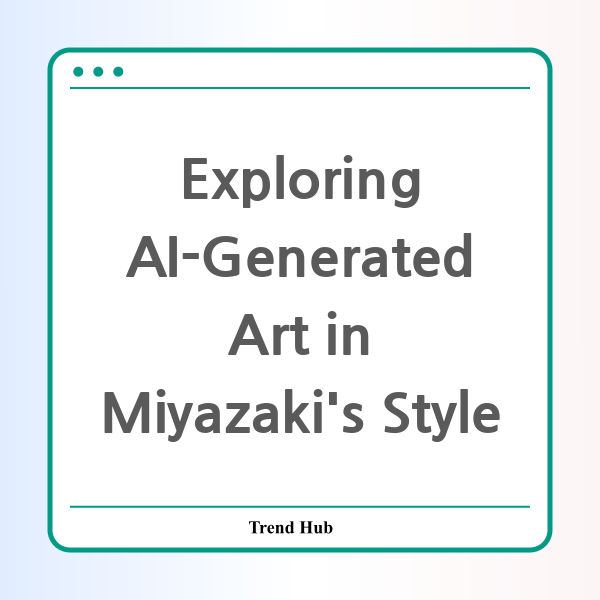* This website participates in the Amazon Affiliate Program and earns from qualifying purchases.

Have you ever wondered how technology shapes the world of art? With the advent of AI, our understanding of creativity and its boundaries is being pushed further than ever before. Recently, OpenAI unveiled an update to its GPT-4o model, and it has ignited heated discussions regarding the implications of AI-generated art, especially when mimicking the styles of beloved artists like Hayao Miyazaki.
As fans of animation cherish the whimsical worlds crafted by Studio Ghibli, the intersection of AI and art raises significant questions. Can a machine emulate the essence of creativity that artists like Miyazaki embody? And what does it mean for originality when any user can generate an illustration that resembles the enchanting aesthetic of films such as Kiki’s Delivery Service and Spirited Away?
AI-generated images, particularly those styled after Miyazaki’s iconic works, have produced a mix of delight and discontent among audiences. On one hand, the ability to create stunning visuals quickly and efficiently has captured the imagination of many. On the other hand, it has ignited concerns regarding intellectual property and the integrity of artistic expression.
Critics point out the ethical dilemma: Is it right for AI to reproduce a beloved artist's style without consent? This controversy calls into question the value we place on the unique identities of artistic works. What makes Studio Ghibli films so special is not just their visual style but the heart and soul put into their creation.
Interestingly, the dialogue surrounding AI art leads to discussions about fan culture and the nature of originality in the digital age. For years, fan art has thrived as a way for enthusiasts to express their love and appreciation for their favorite creators. However, when AI takes over the process, it raises a critical point—what constitutes legitimate homage, and what veers into exploitation?
The rapid output capabilities of AI tools complicate this conversation. Unlike human artists who labor over their creations, AI can produce numerous variations of a style almost instantaneously. This ease of production can dilute the uniqueness fans deeply value, leading to a sense of loss surrounding the original artworks. If everything can be replicated, does it diminish the specialness of the original creations?
Furthermore, the commercial potential of AI-generated art raises eyebrows. Some creators feel that their styles and ideas are being commodified without their participation or acknowledgment. As the lines blur between inspiration and imitation, artists are left grappling with how to protect their legacies in a rapidly evolving digital landscape.
Yet amidst the critiques, there is an underlying curiosity that speaks to the heart of innovation. The potential of AI to create art opens up new avenues for exploration and collaboration. It invites us to consider what art means in an age where technology can mimic aesthetic styles.
Instead of outright rejecting AI-generated art, perhaps we should approach it with curiosity and an open mind. Engaging with AI's capabilities can enhance our understanding of creativity and inspire new forms of artistic expression, even if it challenges traditional notions of what art should be.
Ultimately, the fusion of technology and creativity offers both exciting possibilities and complex challenges. It encourages us to reflect on our relationship with art, the artists we admire, and the ways we engage with the world around us. As we navigate these uncharted waters, it becomes essential to foster a dialogue that respects both innovation and the profound contributions of original creators.
* This website participates in the Amazon Affiliate Program and earns from qualifying purchases.